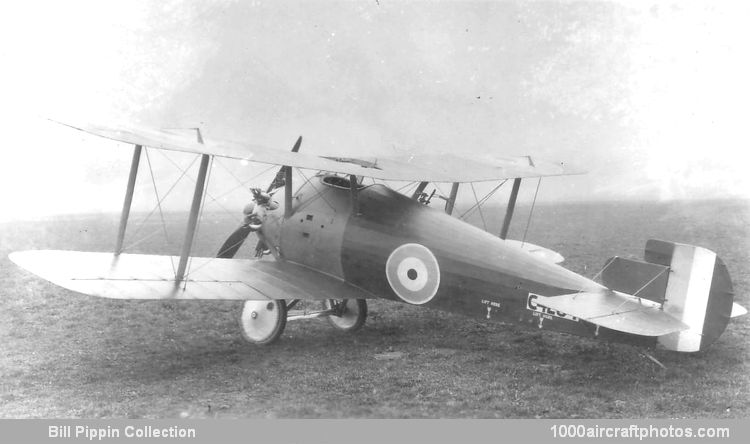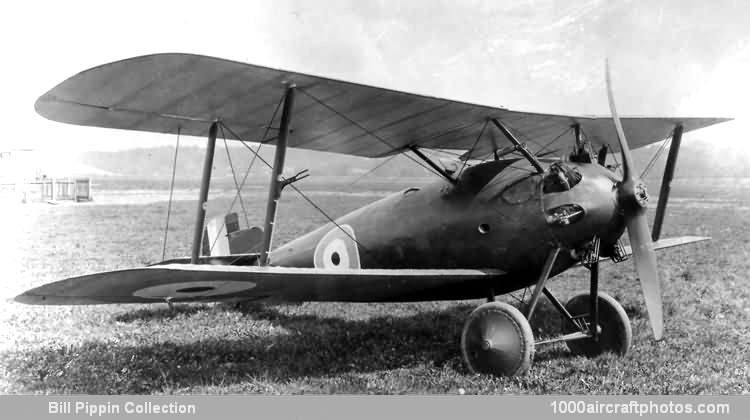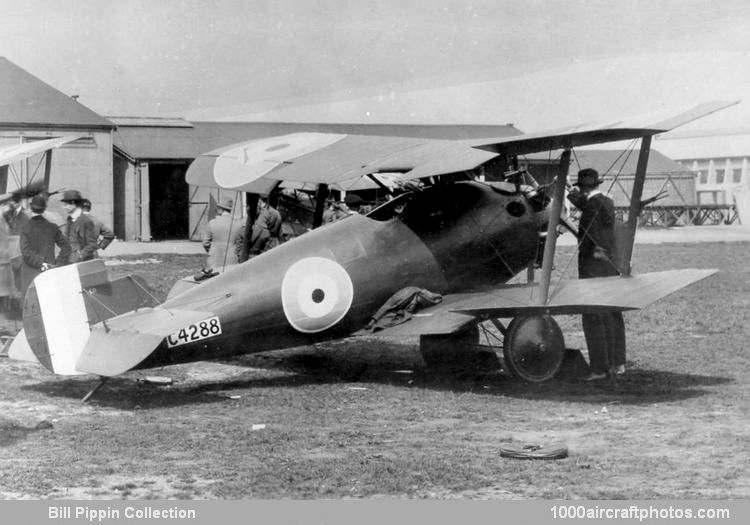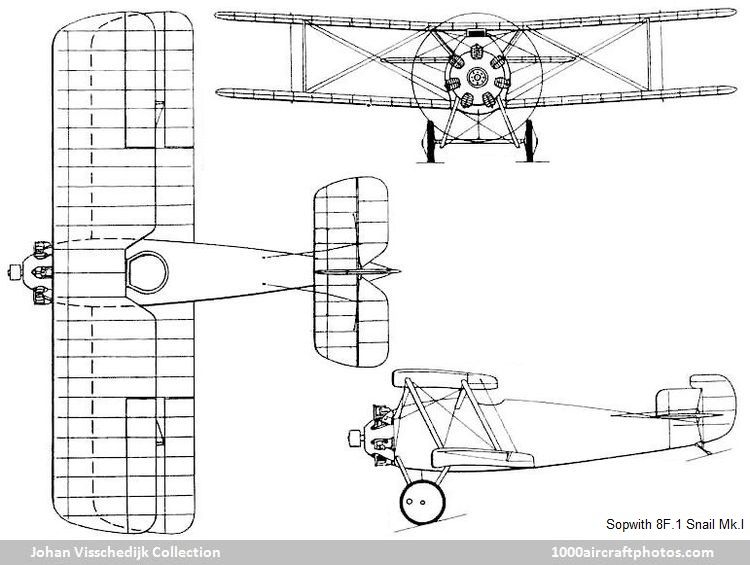02/28/2014. Remarks by
Johan Visschedijk: "In October 1917, the ABC Wasp seven-cylinder air-cooled radial engine was considered to offer much promise, and on the 31st of that month Sopwith was invited by the Air Board to tender designs for a single-seat fighter utilizing that power plant. Four prototypes were ordered, these being of conventional construction, being designated 8F.1 Mk.I, pictured above (s/n C4284 to C4287).
8F.1 Snail Mk.II (C4288) APS No. 3257
8F.1 Snail Mk.II (C4288) APS No. 3264
On November 23, the company was asked to build two additional prototypes with plywood monocoque fuselages, designated 8F.1 Mk.II (s/n C4288, C4289).
In view of its intended function adoption of the name Snail for the new single-seater was bizarre, this being approved on February 16, 1918. Powered by a 170 hp Wasp I, the first prototype Snail Mk.I was completed in April 1918, this having negative wing stagger and fabric skinning for its circular-section fuselage. Intended armament comprised two synchronized 0.303 in (7.7 mm) machine guns, a third weapon of similar caliber being mounted above the wing center section, to starboard of the cut-out.
The remaining three prototypes of conventional construction were not completed, the next to fly being the first of the two Snail Mk.IIs with plywood monocoque fuselages and positive wing stagger. On May 9, the C4288 was sent to Martlesham Heath for official trials, the reports being less than complimentary about its maneuverability and low-speed control. When, in October 1918, it was decided to abandon the Wasp engine, further work on the Snail was terminated, the second Snail Mk.II prototype being discontinued before completion."
The following data relate to the Snail Mk.II.




